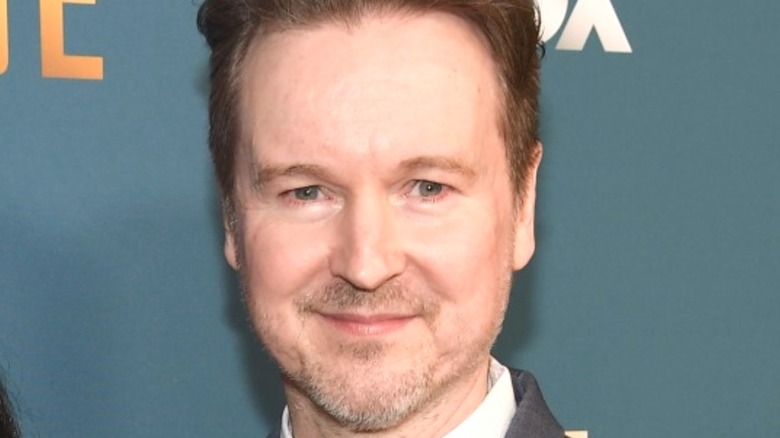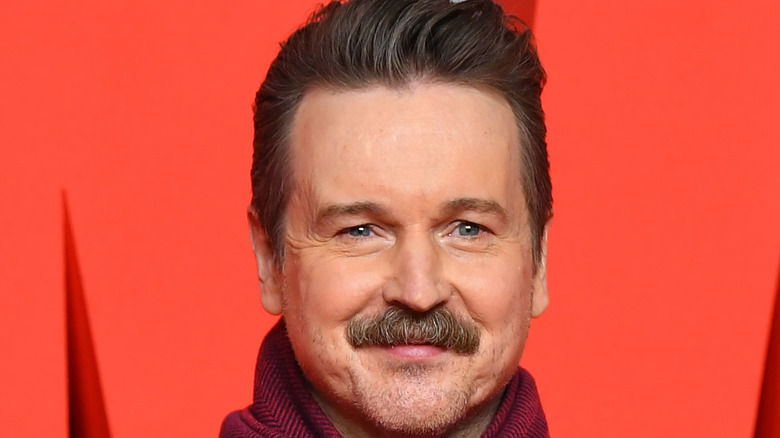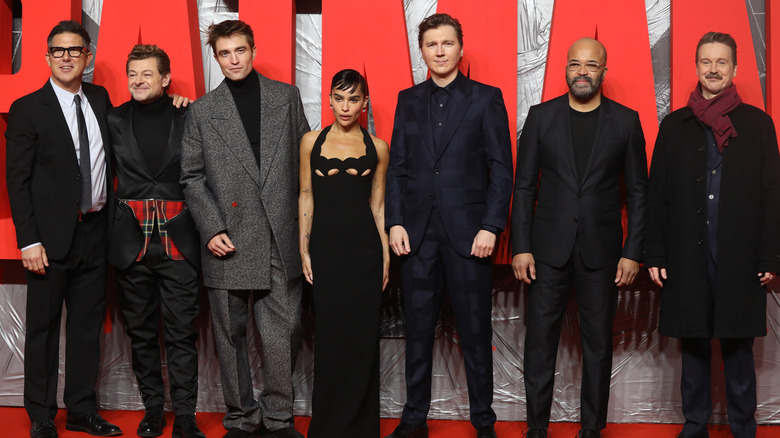The Batman Director Matt Reeves' Letter To Theaters Explained
As "The Batman," director Matt Reeves' long-awaited reboot of the classic hero starring Robert Pattinson, finally opens in theaters, the film is poised to potentially run away with box-office records. Millions of fans will, at last, see Reeves' reimagined vision of Gotham, filled with classic Batman villains and allies, from The Riddler (Paul Dano) to Selina Kyle (Zoe Kravitz).
Promising a superhero movie that's part deconstruction of the Caped Crusader and part neo-noir thriller, the plot of the movie will see Batman facing off against The Riddler, envisioned in this incarnation of the character as a serial killer in the mold of movies like "Seven." Ditching the iconic green top hat and cane, the Riddler of "The Batman" leads the world's greatest detective on a desperate chase as he sows chaos across Gotham, taunting him with a series of letters reminiscent of the Zodiac Killer. However, before firing up the projectors on Wednesday, it appears theater employees received a letter of their own from none other than Reeves himself.
Reeves left theaters a note asking them to calibrate projector brightness
Theater workers received a message from "The Batman" director Matt Reeves on Wednesday, asking them to calibrate their projectors before showing the film in order to provide moviegoers with an ideal experience. The letter was posted to Reddit and implores "theater owners and projectionists" to set their brightness levels to "at least 14fL" (via /u/LilMissLinNim on Reddit). For the unfamiliar, "fL" stands for foot-lamberts, a standard unit measuring projector brightness expressed as the amount of light reflected back to the audience from a single square foot area of the projection surface. It seems that Reeves wants nothing left to chance when it comes to the way audiences first experience "The Batman."
"I worked with my team for a very long time to create a unique story that had a very specific look to Gotham and these great characters," Reeves' letter reads. "The lighting and color timing that went into capturing this look was very important to me...To ensure your audiences enjoy the film the way I intended it, please have your projectors calibrated to achieve at least 14fL." To put this entreaty in perspective, the industry standard is a minimum of 16fL for a dark room such as you'd find in most cineplex auditoriums (via ProjectorScreen). In other words, the director isn't making an extraordinary request; he's asking for the bare minimum.
Since most cinemas tend to run their own ship, there can be a wide variation in image or audio quality from theater to theater, and even from screen to screen. Projection bulbs aren't cheap, and some theater owners with already slim profits may choose to save money in the long run by burning them at lower settings. "The Batman" is already a dark movie, and if audiences want to see all the action, brightness is important.
Reeves' letter is about ensuring moviegoers enjoy the film as he intended
As it becomes more common for movies to release directly to streaming platforms, often without any accompanying theatrical showings, prominent directors have pushed back against the trend. Christopher Nolan insisted in 2020 that his film "Tenet" should be seen on the big screen, even as theaters remained mostly shuttered due to the COVID-19 pandemic, a move that led some major publications to refrain from reviewing the movie out of protest. While Denis Villeneuve's "Dune" was released on HBO Max alongside cinema showings last fall, the "Blade Runner 2049" director also begged audiences to see it on the silver screen, albeit with the caveat that safety comes first.
These are but a couple of examples of directors who believe in the unadulterated theater experience. Proponents of streaming, meanwhile, argue that modern televisions are now bigger and better than ever, often able to match the quality of an average silver screen. Why spend money on tickets and popcorn (or risk a crowded room during a pandemic) when there's a gorgeous 4K display in the next room over from the kitchen?
In this context, Matt Reeves' letter makes a lot more sense. If filmmakers are going to argue that their vision can only truly be experienced in theaters, that argument doesn't hold up unless each individual theater conforms to industry standards. If seeing "The Batman" at your local cinema means watching a dark and blurry mess, you may as well wait for it to hit HBO Max. Reeves' request to show his latest work with the correct specifications may seem controlling, but ensuring that fans see "The Batman" in all its intended glory is a win-win. It means Reeves gets to show audiences the film as he intended it and keeps those audiences coming back to theaters in the future for an experience they can't get anywhere else.


